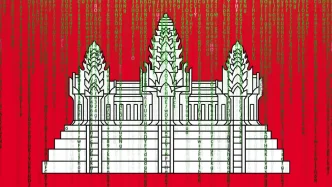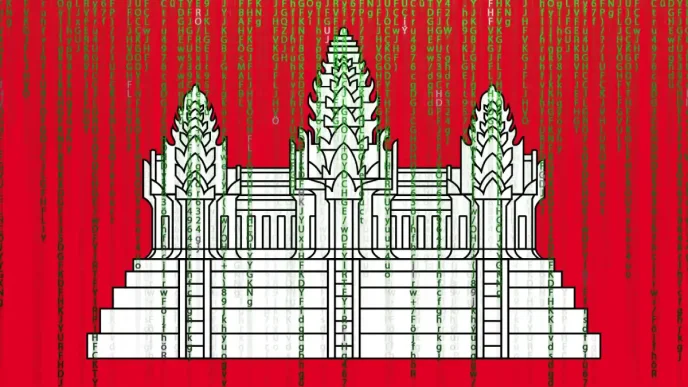In a harrowing tale of exploitation and desperation, thousands of individuals from across the globe, including hundreds of Filipinos, find themselves ensnared in a web of human trafficking and online scams in Southeast Asia. As of January 2025, the Civil Society Network for Victim Assistance in Human Trafficking reports over 6,000 victims from 21 countries, with half originating from China. For many Filipinos, the journey begins with the promise of lucrative employment abroad, only to end in brutal conditions in scam centers along the Thailand-Myanmar border. This crisis, rooted in economic hardship and lax border controls, underscores a growing regional challenge that demands urgent international action.
From Job Offers to Modern Slavery
The stories of Paul, Boyet, and Linda (names changed to protect their identities) are emblematic of the plight faced by many. Paul, a 27-year-old IT dropout from the Philippines, lost his job in Makati when President Ferdinand Marcos Jr. banned Philippine offshore gaming operators (POGOs) in late 2024. Desperate for income, he stumbled upon a job offer on Telegram promising a high salary in Thailand. “The recruiter did not ask for a placement fee,” Paul recalled, a detail that initially seemed like a stroke of luck.
Similarly, Boyet and Linda, a couple who previously worked as overseas Filipino workers (OFWs) in Saudi Arabia and the UAE, found themselves cash-strapped after their employer failed to pay their salaries. Recruited by an individual named Mikaela in the UAE, they too were lured to Thailand with the promise of work as customer service representatives. Like Paul, the absence of a placement fee made the offer irresistible.
Their journeys to Thailand, however, were far from straightforward. Paul and a group of companions took a perilous “backdoor” route, traveling through Balabac Island in Palawan to Sabah, Malaysia, before reaching Bangkok via multiple stops. Their passports were confiscated by agents, and their movements were unrecorded in immigration databases—a process known as “chop chop.” Boyet and Linda, arriving earlier on 1 August 2024, followed a similar path of deception.
The Harsh Reality of Scam Centers
The destination for many of these trafficked individuals is the notorious KK Park in Shwe Kokko, Myanmar, near the border town of Mae Sot in Thailand. Known as a hub for internet fraud and human trafficking, KK Park and its associated complexes, such as KK Park 2 under the alleged X-Max Group of Companies, house thousands of victims forced into online scams. These operations range from dating and gambling scams to fraudulent investment schemes, often targeting vulnerable individuals through social media platforms like X.
Boyet described the roles within these centers: workers act as both “finders” and “chatters,” identifying potential targets online and engaging them in deceptive relationships. Posing as European or Asian women using stolen identities from Instagram, they lure victims into investing in cryptocurrency schemes, often transferring funds via USDT (US Dollar Tether) to untraceable digital wallets. When clients demand video calls, deepfake technology or coerced individuals are used to maintain the illusion.
The conditions in these centers are brutal. Paul recounted how failure to meet quotas led to beatings and abuse, with some of his companions sold to other companies. Despite paying 270,000 Philippine pesos (approximately £3,800) for his release, Paul was trafficked again to another operation. Boyet and Linda, laid off in early January 2025, opted to pay $1,500 each for their freedom rather than continue under duress.
Escaping the Nightmare
Paul’s determination to escape led to a daring early morning breakout on 6 February 2025. With guidance from Colonel Dominador Matalang, the police attaché at the Philippine Embassy in Thailand, he navigated through farms and crossed the Moei River back into Thailand with the help of a local boatman. Boyet and Linda reached safety on 31 January, joining Paul in a shelter in Chiang Rai under Thailand’s National Referral Mechanism (NRM) for human trafficking victims. Here, they undergo counseling while awaiting repatriation, a process involving interviews and assessments by Thai authorities and coordination with their respective embassies.
Yet, for every successful escape, countless others remain trapped. Colonel Matalang estimates that around 500 Filipinos are still held in scam centers in Myanmar, part of the broader 6,000 victims identified across the region. The scale of the crisis, spanning individuals from Bangladesh to Brazil, highlights the international nature of these trafficking networks.
Regional Responses and Challenges
The Thai government has taken steps to disrupt these operations, imposing sanctions on Myawaddy and other border regions since late January 2025. Power, fuel, and internet access have been cut off to five communities in Tachileik, Myawaddy, and Payathonzu, aiming to cripple the infrastructure of scam centers. Additionally, a crackdown on fuel and solar panel smuggling to these areas has been reported by the Bangkok Post. While these measures offer hope to those still trapped, their immediate impact remains uncertain, and victims continue to endure dire circumstances.
The challenges in combating this crisis are multifaceted. Porous borders, such as the Moei River crossing between Mae Sot and Myawaddy, facilitate illegal movement, with victims often lacking departure or arrival stamps in their passports. Allegations of complicity among immigration officials, particularly at Ninoy Aquino International Airport in Manila, further complicate enforcement. Paul and others reported passing through checkpoints without scrutiny, raising questions about systemic corruption or negligence.
Moreover, the use of advanced technology like deepfakes and encrypted transactions via cryptocurrencies poses new hurdles for law enforcement. These tools enable traffickers to operate with anonymity, exploiting global digital platforms to target victims and clients alike.
A Call for International Action
The human trafficking crisis in Southeast Asia is not merely a regional issue but a global one, demanding coordinated action. For the Philippines, addressing economic vulnerabilities that drive citizens to seek work abroad under risky conditions is critical. The ban on POGOs, while aimed at curbing illegal activities, has left many like Paul without livelihoods, pushing them into the arms of traffickers. Support systems for returning OFWs, such as Boyet and Linda, must also be strengthened to prevent similar exploitation.
Thailand’s sanctions and victim identification processes under the NRM are commendable steps, yet they must be matched with robust cross-border cooperation with Myanmar, where political instability exacerbates the problem. International bodies, including the United Nations and ASEAN, have a role to play in facilitating dialogue and resource-sharing to dismantle these networks.
If left unchecked, the proliferation of scam centers risks further entrenching modern slavery in the region. While Thai sanctions may pressure operators, without comprehensive strategies—such as targeting digital wallets and social media accounts used in scams—these networks could adapt and relocate. Estimates of victim numbers, though unconfirmed, suggest the scale could grow if economic disparities and border insecurities persist, a scenario that remains speculative but plausible given current trends.
Beyond Borders: A Human Tragedy
At its core, this crisis is a human tragedy, stripping individuals of their dignity and freedom. Paul, Boyet, and Linda are among the fortunate few who escaped, but their stories of resilience are overshadowed by the thousands still in captivity. As they rebuild their lives in shelters, the psychological scars of their ordeal linger, a reminder of the urgent need for systemic change.
For the international community, the plight of these victims in Southeast Asia must serve as a wake-up call. Beyond sanctions and rescues, addressing root causes—poverty, unemployment, and weak governance—remains the only sustainable path forward. Until then, the hope of freedom for those still trapped in scam centers hangs in a fragile balance, awaiting decisive action from governments and global partners alike.














